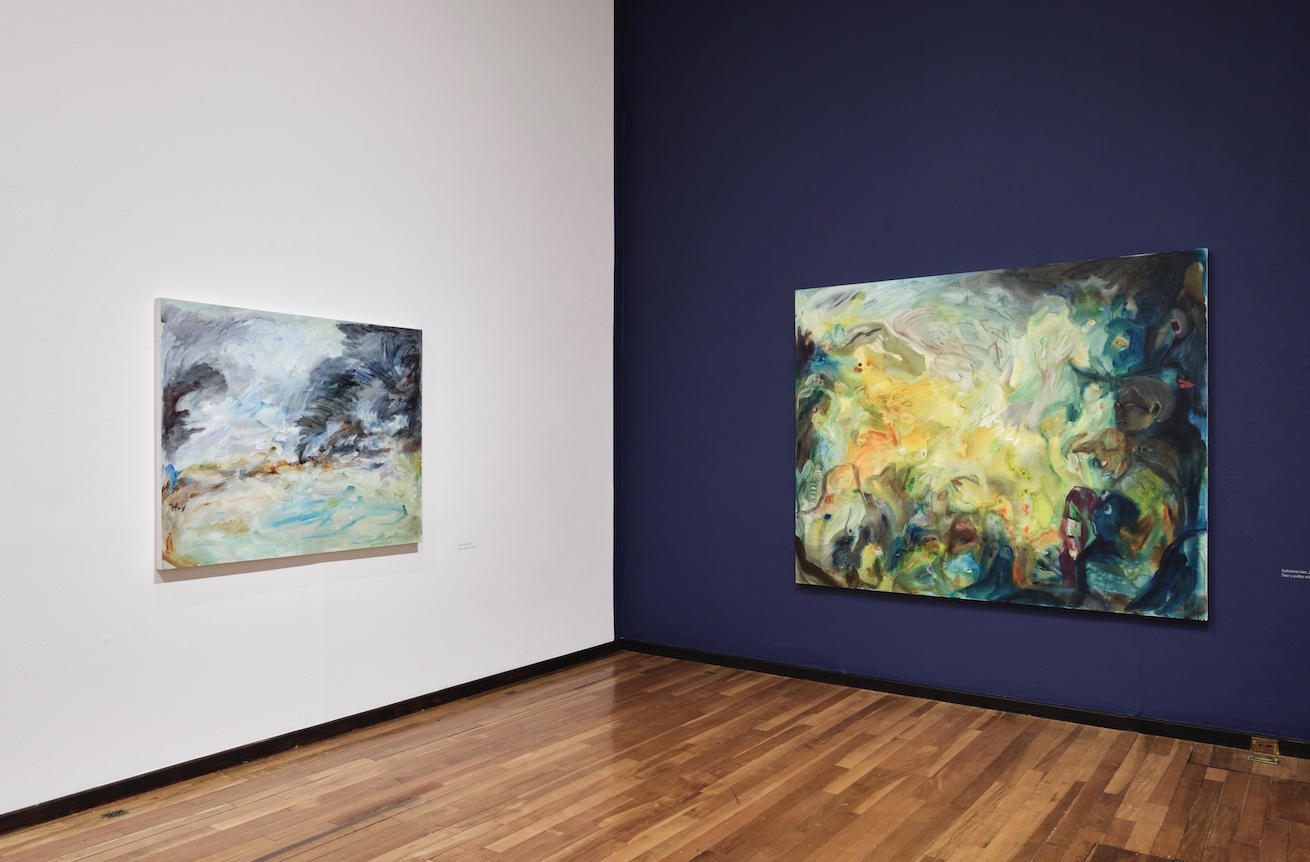
Lucía Vidales
El fuego que no produce
Exhibition
-> Sep 23 2023 – Jan 28 2024
The Cabañas Museum presents El fuego que no produce by Lucía Vidales.
The enigma and fascination embodied in the representation of the body is the essence of the aesthetic practice of Lucía Vidales (Mexico City, 1986). How to capture the corporeal through painting and drawing in a present increasingly dominated by digital technologies and virtuality? Lucía must have already knocked on several doors to find answers and possible solutions to this question. What we observe here, first of all, is a transmutation of her own body and her tenacious will.
This exhibition has as its starting point the interest of this artist in delving into the plastic language that José Clemente Orozco developed around the representation of the human figure. Consequently, Vidales carried out a work of analysis and free interpretation of the graphic collection that, of this famous Jalisco artist, is kept by the Cabañas Museum. Without attempting a parallelism or a tribute to JCO, this set of works seeks to engage in a transhistorical dialogue around the emotional, violated, metamorphic and, therefore, political representation of the human body in the vast history of painting and drawing. Therefore, this exhibition is a site-specific exhibition.
The works gathered here allow us to appreciate the plastic and visual experimentation of this artist marked by an immense chromatic, luminous and expressive vitality enveloped by an inexplicable lightness or transience. This contrast of intensities and temporalities not only operates at a perceptual level but also from a narrative and intellectual approach in which drawing and painting merge in the same field of action.
She also highlights the representation of the female body in disfigurements and scenarios that refer to the coven, the occult, or profane but also the grotesque, erogenous, and cartoonish. Heresy as an emancipatory process for women, as a fight against ecclesiastical and male oppression in the Middle Ages. In this regard, the Italian writer, feminist and activist Silvia Federici points out, in her brilliant book Caliban and the Witch. Women, body and original accumulation, the following: “in the transition from the persecution of heresy to the hunt for witches, women became increasingly clear the figure of the heretic.” The fire that it does not produce is the fire that gathers and congregates, that conspires and attacks the established order and its terrible consequences... even in the present. The fire that purifies and renews. That is the fire that Lucía here offers us.
― Víctor Palacios